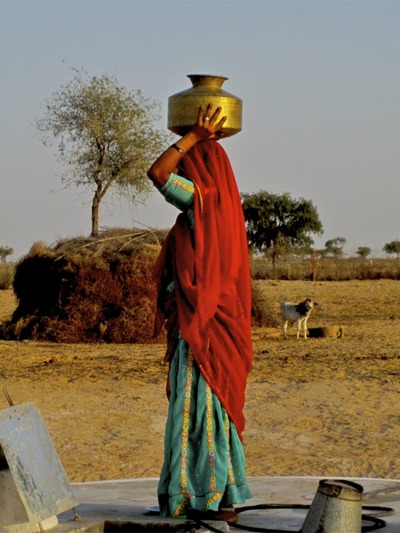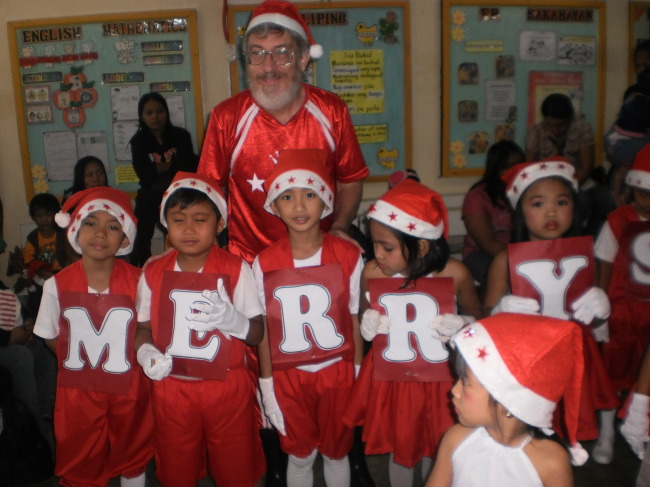words + photos by Barbara Aman
We arrived late at night at the field office of the nonprofit, a crumbling cement structure with a few rooms and a few rusted bed frames with torn, flattened pads. I was here to document the progress of a multinational water-supply project in this drought-challenged desert region in India’s western Rajasthan state. No luxury hotel here.
 Up before sunrise the next morning we first visited water catchment areas, where large areas were dug out a few feet down, the women wielding picks, the red dirt transported away with beat-up metal bowls by all available family members--typically grandparents and grandkids, who often worked together. The elder male stood at a distance, dressed in white--as if a maharajah from the past, leaning against his wooden cane--while the women, dressed in brightly patterned red saris, toiled behind him.
Up before sunrise the next morning we first visited water catchment areas, where large areas were dug out a few feet down, the women wielding picks, the red dirt transported away with beat-up metal bowls by all available family members--typically grandparents and grandkids, who often worked together. The elder male stood at a distance, dressed in white--as if a maharajah from the past, leaning against his wooden cane--while the women, dressed in brightly patterned red saris, toiled behind him.
It’s the women and girls who are most affected by the water shortage here. Many in the villages spend up to five hours a day walking to and from the closest well or storage tank, carrying water in their beat-up metal pitchers. Water for drinking, cooking, washing--it falls to them to fetch it, however far away it may be. Male/female roles are strictly cast here: Whatever it takes to keep the home and family running, it’s up to the females to get it done. At one point, Michael, my partner, had teasingly picked up one of the full water containers and placed it in my arms, and my legs almost crumpled. I could not imagine how these tiny women could carry these on their heads.
The next stop was a completed water catchment and storage area and as we drove up I could see the bright white paint job on the 12-foot round tank, jutting up about 2 feet from the ground, the lower half nestled tidily in the hard clay soil. A young woman stood atop it, quite shyly, covering her face with her tattered sheer sari while balancing her metal water jug adeptly atop her head. Her eyes seemed to bore through me, even in their shy state.

